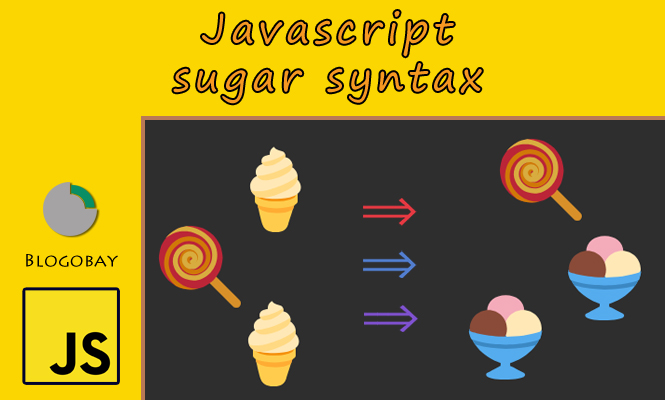In the vast realm of programming languages, syntax dictates the structure and clarity of your code. While both TypeScript and JavaScript offer various syntactic constructs, “sugar syntax” refers to concise shortcuts that improve readability and maintainability. This article explores the key sugar syntax elements in these languages, equipping you to write sweeter, more expressive code.
Decoding sweetness: essential sugar syntax elements
- Template Literals: backticks (`) allow multi-line strings and string interpolation with embedded expressions.
const name = "Alice"; const greeting = `Hello, ${name}!`; // greeting becomes "Hello, Alice!".
- Destructuring: extract values from arrays or objects into individual variables in a concise way.
const [firstName, lastName] = ["John", "Doe"]; // firstName = "John", lastName = "Doe"
const { name, age } = { name: "Jane", age: 30 }; // name = "Jane", age = 30
- Spread Operator (…): copy elements from arrays or objects into new structures.
const numbers = [1, 2, 3]; const copiedNumbers = [...numbers, 4]; // copiedNumbers = [1, 2, 3, 4]
- Rest Operator (…): collect remaining elements of an iterable into an array.
function sum(...args: number[]): number {
let total = 0;
for (const arg of args) { total += arg; }
return total;
}
const result = sum(1, 2, 3, 4); // result = 10
- Optional Chaining (?.) and Nullish Coalescing (??): safely access properties of nested objects and provide fallback values.
const user = { profile: { name: "Bob" } };
const username = user?.profile?.name ?? "Unknown"; // username = "Bob"
- Arrow Functions (=>): define concise function expressions, often used for callbacks and event handlers.
const numbers = [1, 2, 3].map((n) => n * 2); // numbers = [2, 4, 6]
- Classes and Interfaces: create blueprints for object structures and behaviors.
interface Product {
name: string;
price: number;
}
class Cart {
items: Product[];
constructor(items: Product[]) {
this.items = items;
}
getTotalPrice(): number {
// ... calculate total price
}
}
- Automatic getters/setters: properties can be accessed directly without getters/setters.
export class Product {
constructor(
public icon: boolean,
public name: string,
public title: string,
public type: string
) {}
}
Angular-specific sweetness: beyond JavaScript/TypeScript
- Property Binding: connect component properties to HTML elements dynamically.
<p>Welcome, {{ username }}</p> // username property bound to the paragraph
- Event Binding: react to user interactions on HTML elements with event handlers.
<button (click)="handleClick()">Click me!</button> // handleClick() on button click
- Template References: access DOM elements within the template for manipulation.
<input #myInput type="text"> <button (click)="getValue(myInput.value)">Get Value</button> // access input value
- Interpolation with Filters: format and transform data directly within templates.
<code>{{ price | currency:'USD' }} // format price as USD currency</code>
The benefits: why use sugar syntax?
- Improved Readability: Concise code is easier to understand and maintain.
- Reduced Verbosity: Less code to write means less time spent typing and more time for logic.
- Modern Features: Leverages newer language constructs for cleaner and more expressive code.
A note on caution: balancing sweetness with clarity
While sugar syntax offers benefits, be mindful of potential drawbacks:
- Overuse: Excessive sugar can obfuscate complex logic and hinder readability.
- Reduced Learning Curve: Understanding sugar syntax requires additional knowledge.
- Browser and Version Compatibility: Newer features might not work in older browsers.
Conclusion: mastering the art of sweetness 🍭🍦🍨
As you traverse the vast landscape of TypeScript and JavaScript, embracing the power of sugar syntax can significantly enhance your coding experience. By incorporating these concise and expressive shortcuts into your code, you can write more readable, maintainable, and ultimately sweeter applications. However, remember to wield this power with caution, avoiding overuse and prioritizing clarity. Just like sugar in your diet, moderation is key! Experiment, learn, and adapt your approach to find the right balance that sweetens your code while ensuring everyone can still understand and appreciate its delicious functionality.
Try it at home!
